Art and Trash, But Mostly Trash
In which Norm confronts the strange appeal of Niko Mastorakis' NIGHTMARE AT NOON and .COM FOR MURDER. No, really.
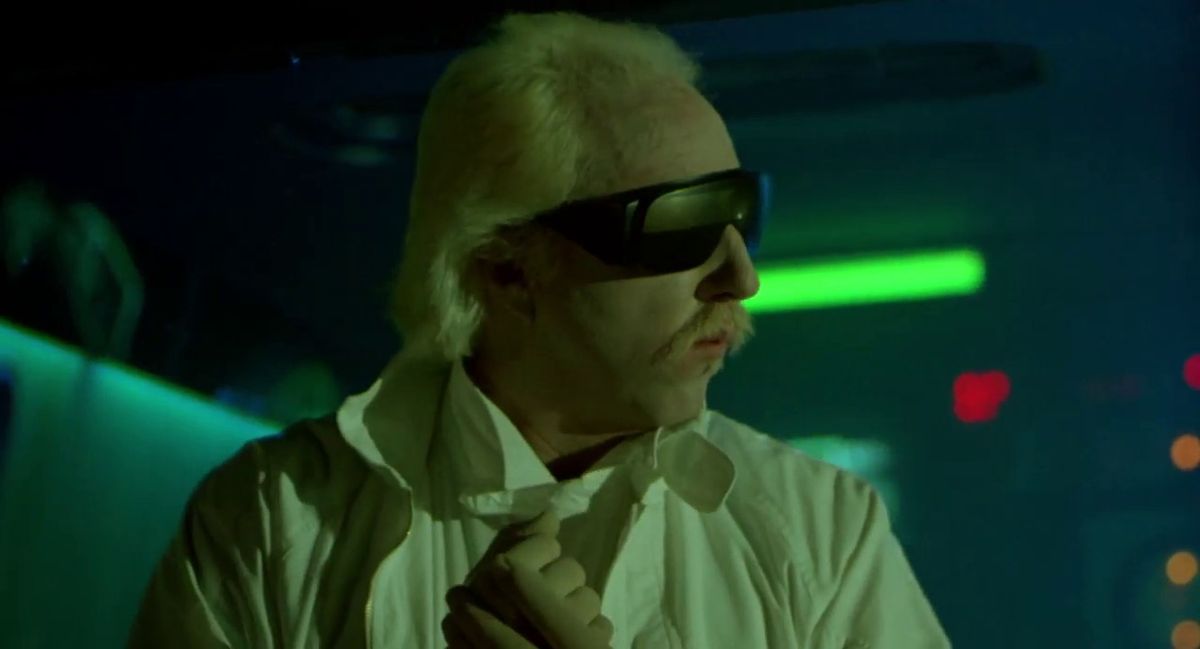
For various reasons, I’ve been revisiting a lot of ’80s pulp cinema of late – studio stuff, indie stuff, direct-to-video stuff. And the gap between filmmakers that are trying to use genre projects to say something meaningful – your Romeros, your Bigelows, your Verhoevens – and those who just want to cash in on whatever trend is moving stock at Blockbuster has never seemed wider.
On the Blu-ray front, cult labels are finding their niche business catering to both sides of that gap, rolling out loving special editions of anything and everything that might have a fan base. Shout! Factory, Arrow and Kino Lorber are knocking out terrific 4K discs of studio classics while also finding room in their schedule for less reputable titles. I’ve been especially enjoying watching Arrow assemble elaborate bells-and-whistles releases of things like Girls Nite Out and the titles in the Gothic Fantastico boxed set; it’s not just that these movies are being rescued from obscurity, but that they’re being celebrated with new supplements and the best possible presentations. If you really love these movies, this is how you want to see them.
And it turns out there are people who really love the films of writer-director Nico Mastorakis. I have to admit I’ve never been one of them; even in the VHS days, his movies struck me as overly derivative; he was, to borrow a line from that episode of Poker Face, a holistic magpie, cribbing story elements from whatever was trending and delivering a low-budget version of it. His dialogue isn’t great, his direction of actors is wobbly, and his pacing is about fifteen percent slower than it ought to be … but there’s still something fascinating about the finished films. They feel like the kind of movies that’d play in the background of a self-aware comedy. And sometimes something genuine slips through the cracks.
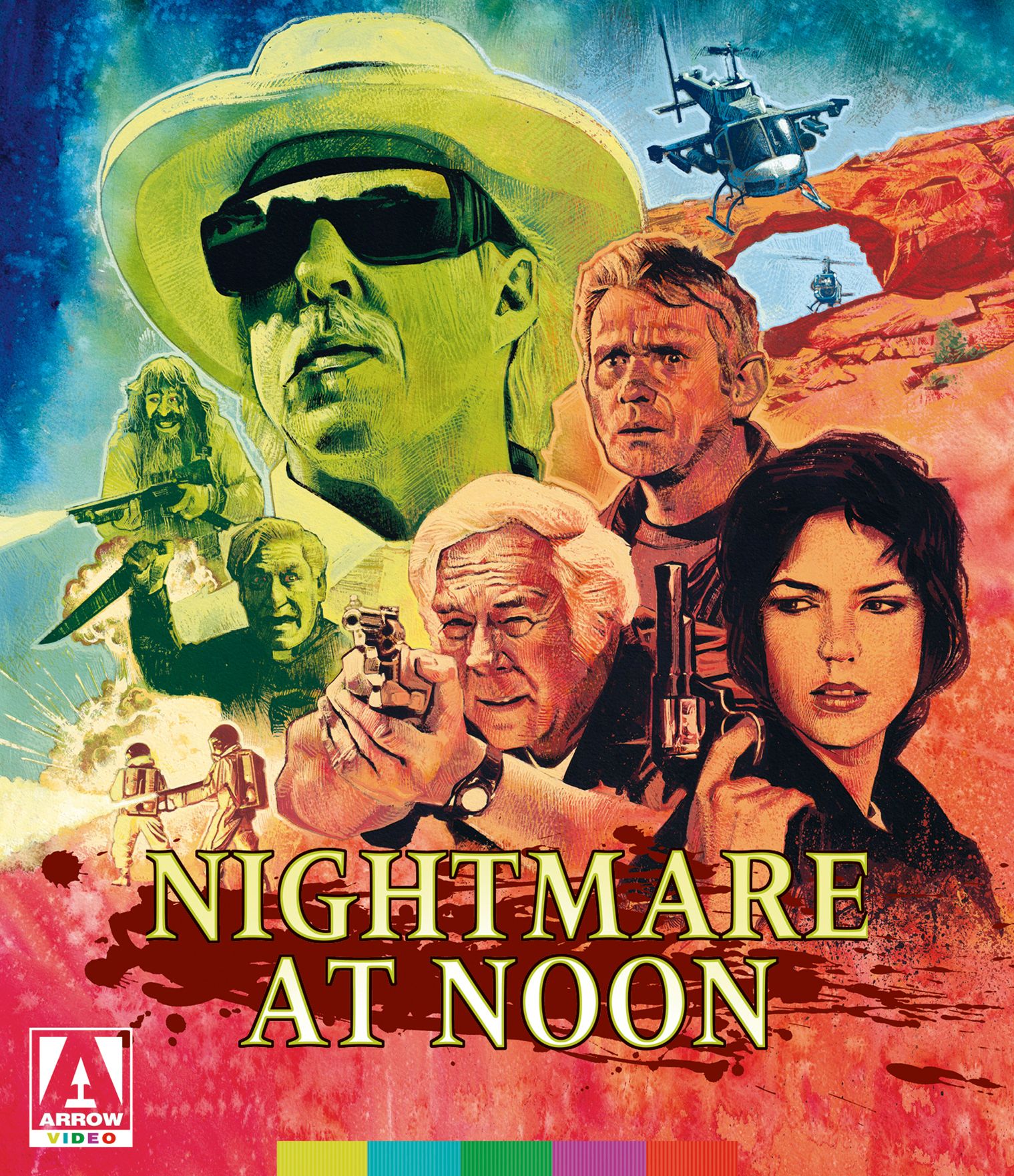
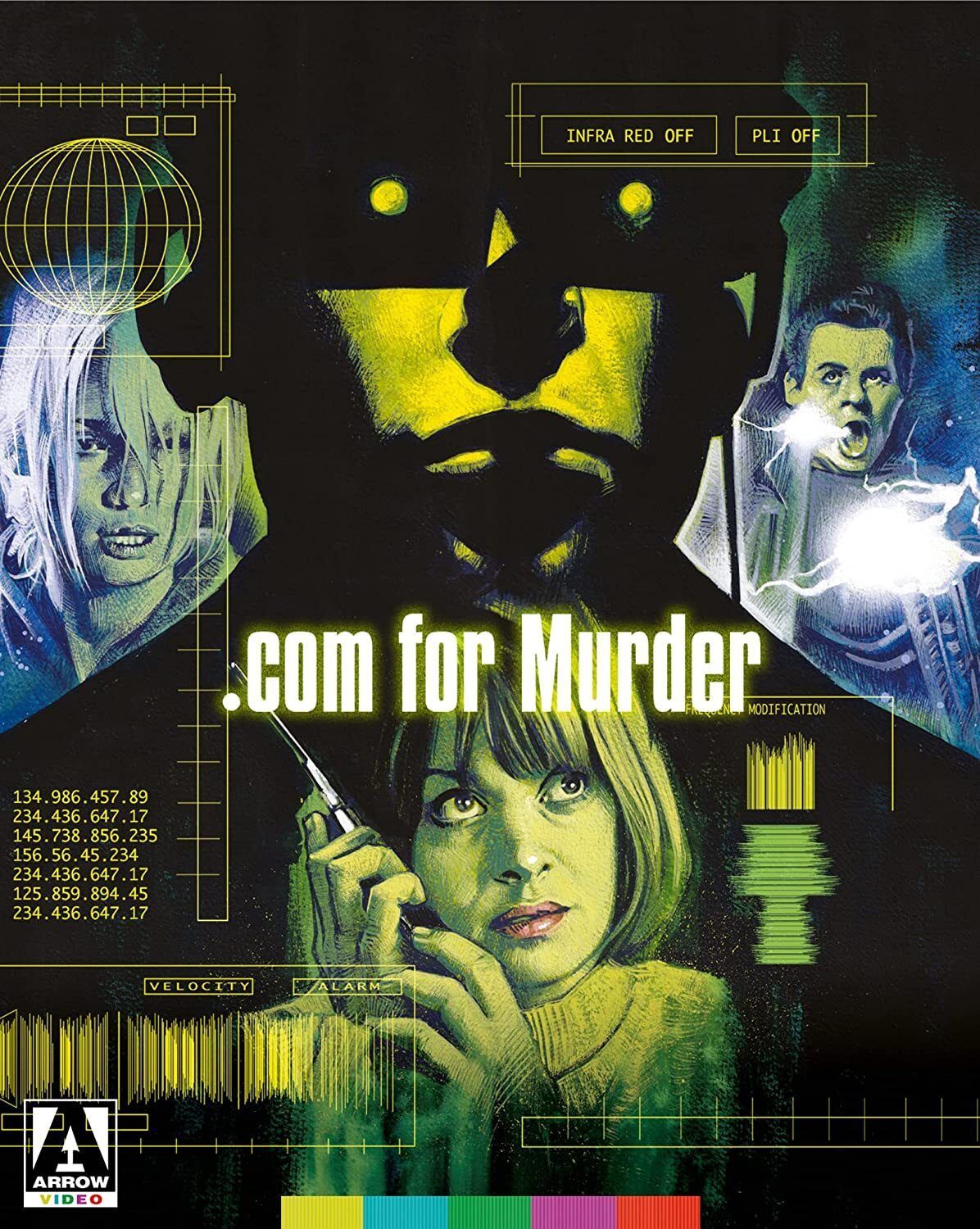
This week, I caught up to Mastorakis’ 1988 Crazies knockoff Nightmare at Noon and his 2002 cyber-thriller .Com for Murder, both of which have recently been reissued in new Arrow special editions. (Shout released a Blu-ray of Nightmare at Noon a few years ago, but I believe this is the first time .Com for Murder has been available on the format.) And yeah, they’re still strangely compelling.
If you’re old enough to remember video stores, you may recognize a couple of key images from Nightmare at Noon: Blade Runner heavy Brion James as a villain known only as The Albino, dressed all in white and holding weird binoculars in a desert, or a middle-aged maniac in overalls, oozing bright green blood, charging at police chief George Kennedy. Its town-gone-mad narrative owes more to the ’80s thrillers Warning Sign and Impulse than Romero’s broader satirical project, with a handful of heroes (Kennedy, Bo Hopkins, Wings Hauser) trying to survive an outbreak of random violence among the townsfolk … but Mastorakis also brings in hazmat-suited paramilitary guys straight off the Crazies poster, and then shifts the climax to a helicopter chase because, I dunno, Blue Thunder was playing on cable while he was writing the outline?
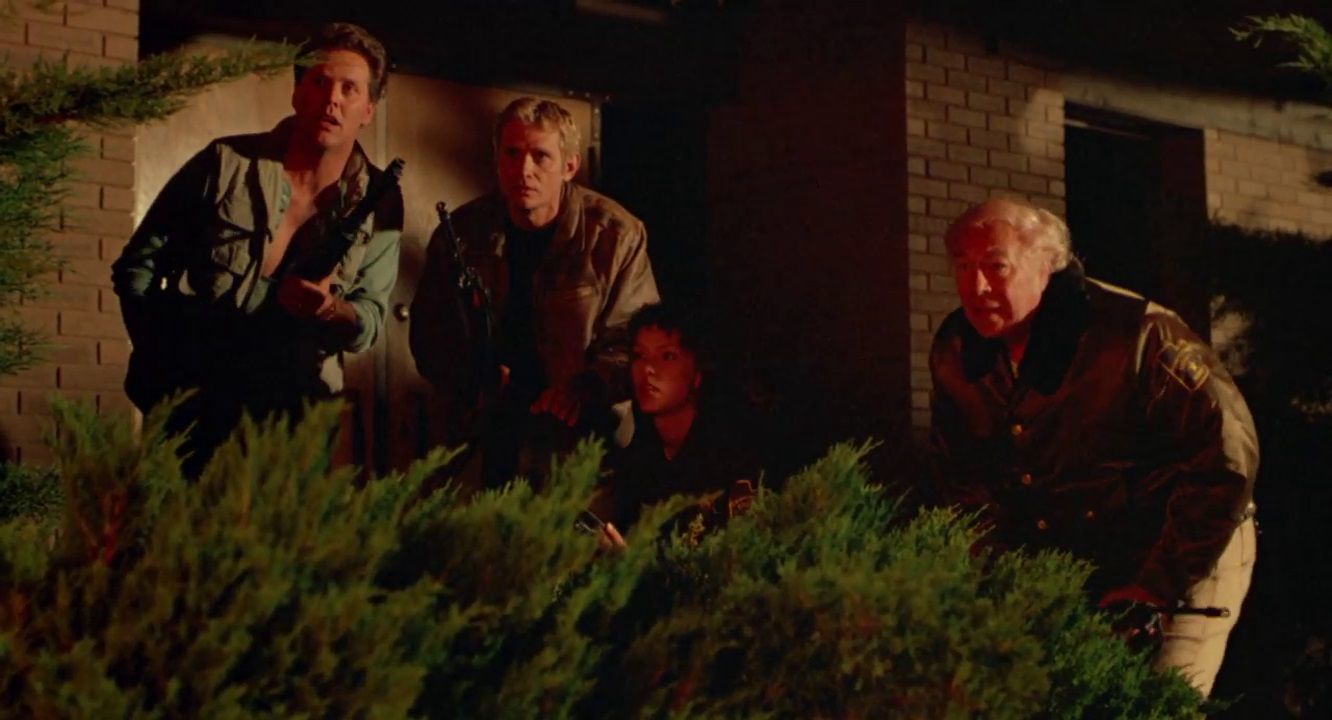
Like I said, this isn’t a good movie or anything, but it has its moments. The practical car stunts are enthusiastic and plentiful, George Kennedy finds a way to put some humanity into his terrible dialogue, because he was a pro, and that climactic helicopter chase is pretty impressive when you remember the whole thing is really happening. Nightmare at Noon is a resoundingly analog production, and Arrow’s 2K restoration – from the original camera negative! – is a lot cleaner and brighter than I’ve ever seen a Mastorakis production. It doesn’t make Hopkins’ dime-store Steve McQueen act any better, mind you, but at least you can see every crinkle in his face.
.Com for Murder looks good, too – once the horrible DV opening montage is past, anyway. In an accompanying documentary, Mastorakis explains he became enamored with the potential of digital video while researching the online aspects of his cyber-thriller, though ultimately all he does with it is restage the night-vision climax of The Silence of the Lambs. Of course, he also claims the film is his homage to Hitchcock’s Dial “M” for Murder – get the joke of the title now? – though the story, with Nastassja Kinski as Sondra, a Los Angeles woman stuck sitting around recovering from a broken leg and taunted by a sociopath she’s pissed off in a chat room, owes a lot more to Rear Window. Or at least it thinks it does; again, Mastorakis really doesn’t seem to pay that much attention to the films he’s remaking. Certainly Hitchcock never conceived of an Extremely Online proto-incel who calls himself Werther (after a Goethe character) as his villain, and text chat rooms are a meager replacement for the many balconies and windows of an apartment complex.
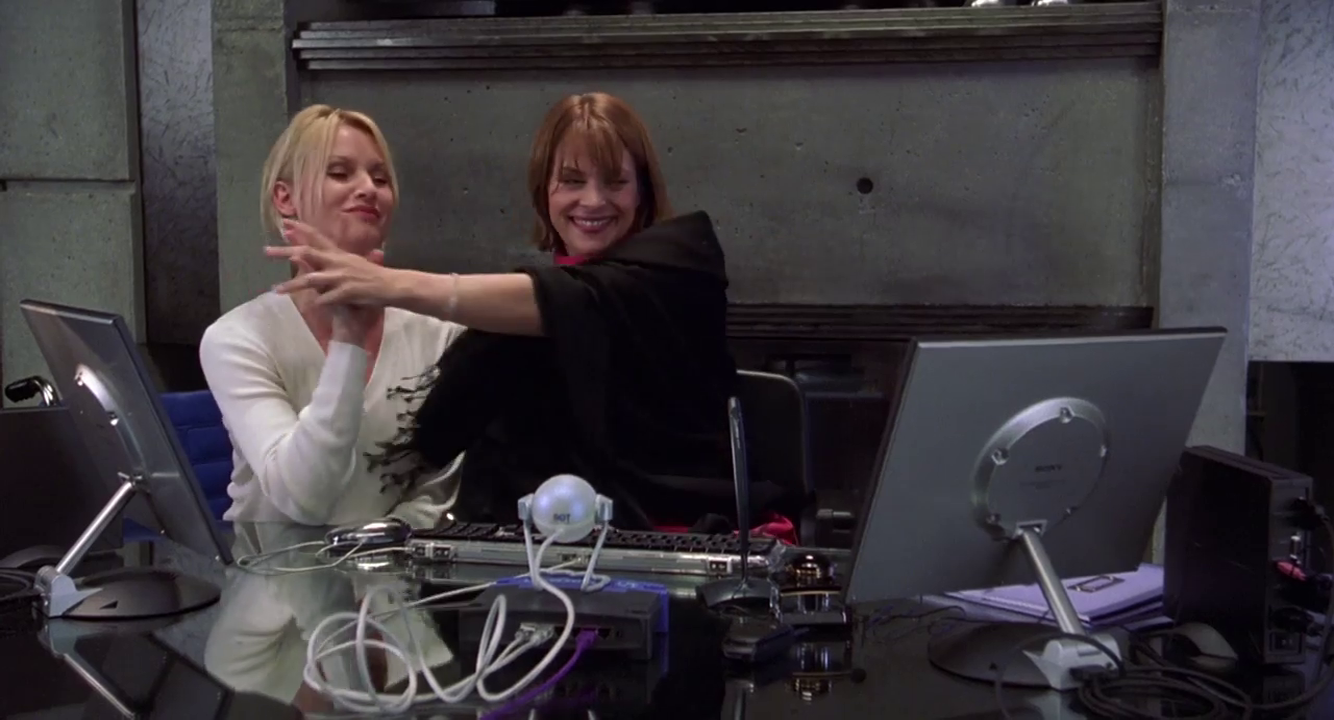
But once again, Mastorakis’ monomaniacal focus on his storytelling allows for some surprises in the margins. Kinski and Nicolette Sheridan (who plays Sondra’s sister Misty) have a loose, fun dynamic that props up multiple scenes where they stare at computer screens and/or yell at 911 operators, and Huey Lewis and Melinda Clarke – just before she started The O.C. – turn up as FBI agents who make an X-Files reference (magpie!). Weirdly, Lewis isn’t the only rocker in the picture; Roger Daltrey also puts in a brief appearance as Sondra’s apparently solicitous husband, who sets her up in the 2002 version of a smart house for her recovery and is never seen again. And there’s something almost charming about the way the movie’s “futuristic” smart-home is so clunkily imagined: The house AI is just some dude’s voice on a condenser mic saying “Door is open” or “door is closed”. (Also, between this film and Nightmare at Noon you can watch Mastorakis really work through his love for glowing text on screens.)
![Jeffery Dean [sic] does creepy stuff in his bedroom in .COM FOR MURDER, but he has excellent lighting.](https://shiny-things.ghost.io/content/images/2023/02/vlcsnap-2023-02-09-22h51m51s327.png)
I can’t say I recommend either of these movies, but Arrow’s discs give them the best presentations possible, with plenty of extras: There’s like an hour and a half of EPK material on the Nightmare at Noon disc, and a half-hour excerpt from the documentary The Films of Nico Mastorakis focusing on the production. .Com for Murder has a half-hour retrospective narrated by Mastorakis himself, who opens it mourning the loss of his production company’s offices, walks us through multiple versions of the film’s opening sequence and then lingers way too long over some striptease footage shot for an incidental sequence. There’s also an archival production featurette and interviews with Daltrey and Lewis, both of whom exude a hey-whatever attitude that probably served them well on the set.
Fun fact: I was today years old when I discovered that Mastorakis is that Nico Mastorakis, and now I don’t know how to feel about anything. Maybe the vulgar auterists are onto something, after all.
In Sunday’s paid edition: Criterion upgrades Krzysztof Kieslowski’s Three Colors Trilogy to 4K, and everybody wins.
